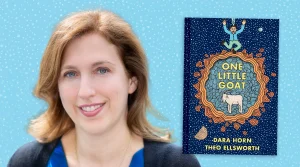 TORONTO — Recently, Sonia Kafka and her daughter, Helen, were cleaning out Sonia’s basement when they came across an old chocolate box.
TORONTO — Recently, Sonia Kafka and her daughter, Helen, were cleaning out Sonia’s basement when they came across an old chocolate box.
Helen and Sonia Kafka
Inside it were two carefully preserved light-brown braids, each 14 inches long.
For years, Sonia, 74, couldn’t bring herself to part with the hair she’d had cut as a young teenager shortly after immigrating to Canada.
 Sonia Kafka’s braids
Sonia Kafka’s braids
But now – having seen pictures in The CJN of youngsters who donated their hair to provide wigs for cancer patients – she wondered if her braids could be used as well.
“I said, finally, ‘It’s time,’” Sonia told The CJN.
Helen – who used to play with the braids as a child, holding them up to her own hair in front of a mirror – inquired about donating them, and was told the braids could be used, even 61 years after the hair was cut.
Mike Suba, president of Continental Hair, which makes wigs for children who have lost hair to cancer treatment or because of other medical issues, said that Kafka’s braids are lovely. They’re “really thick at the base, and the hair is in really good condition. It’s not faded.”
Donated hair needs to be 10 inches or longer, unbleached and not permed, and secured by elastics at both ends, he said. The age of the hair “isn’t a problem,” if it’s been stored properly in a clean, dry place, he added.
For Sonia, a stylish haircut was a symbolic part of beginning a new life in Toronto.
“You tried to fit in as much as you could,” she recalled.
The long braids went, and she began wearing long skirts and saddle shoes instead of the sailor blouse and “little pleated skirt” that she wore when she arrived here at age 13 with her mother, stepfather and stepbrother.
An older brother, who had arrived three years earlier with his wife, sponsored the family.
“That’s when my life began,” recalled Sonia, who was only three years old when World War II broke out.
She spent her early years in the Polish port city of Gdynia, and survived the war in an orphanage, reuniting with her mother when it was over.
They arrived in Canada not knowing any English, having spent the postwar years in a DP camp in Germany.
“It wasn’t easy,” Sonia recalls. The family rented a flat in a downtown home until her parents were able to buy a house on Euclid Street.
Sonia left school as a teenager to work in sales and was married shortly before her 18th birthday.
In fact, she said, she grew up with her three children, learning how to skate and swim when they did.






